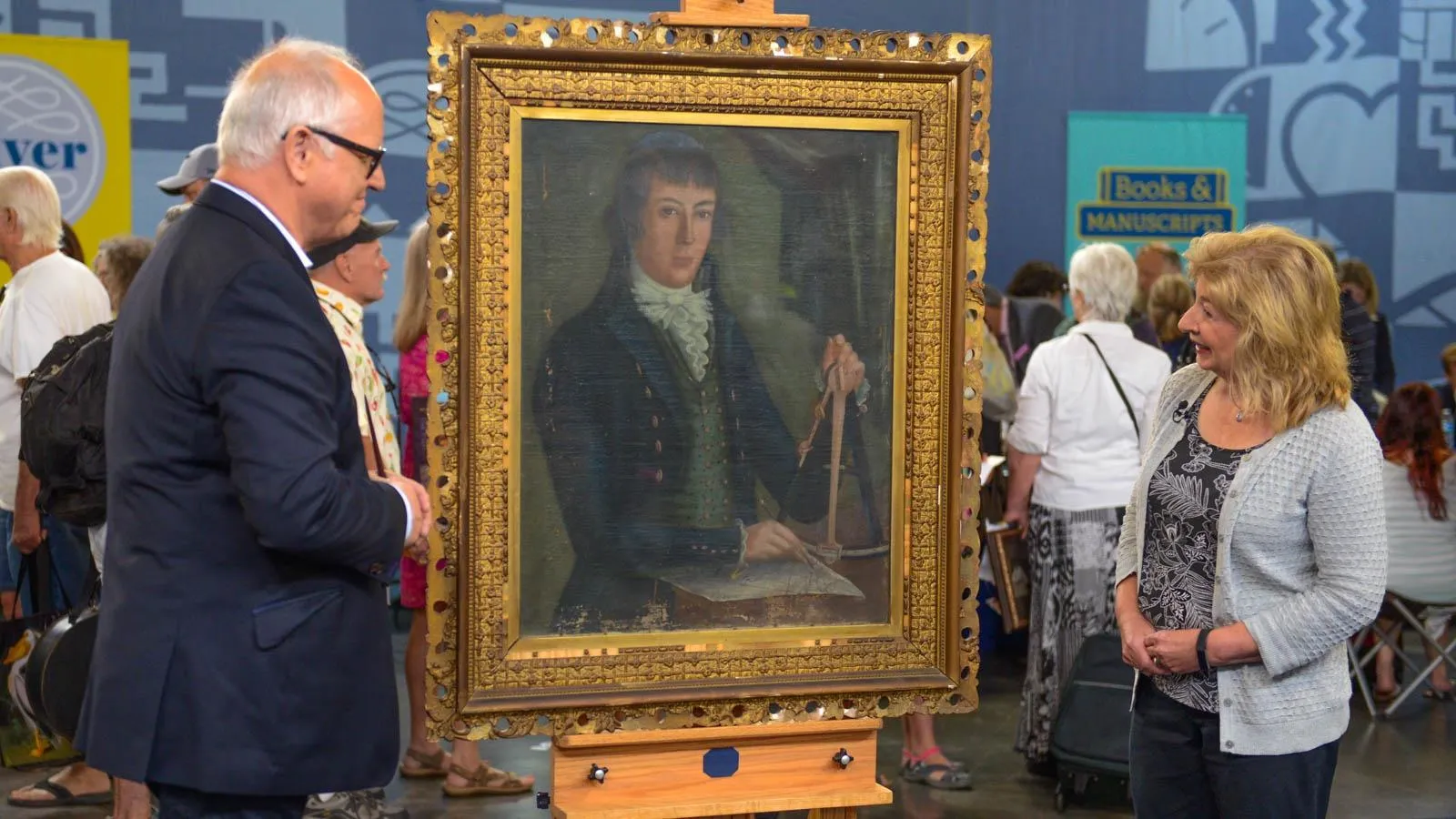GUEST: This is Eliza Bas. She was the wife of an admiral for the Holland navy. It's hung in my grandparents' house ever since I was a little kid. I used to walk up the stairs to the landing, then make a left up another set of stairs, and her eyes are always looking right at yah. It was, uh... In fact, as a little kid, I used to grab my mother and father's hand to get by her, and it's, uh, and I used to think it was an old guy at first.
APPRAISER: Well, it, it, it does look like an old man wear, wearing a woman's clothes a little bit. How long has it been in the family, do you know?
GUEST: As far back as I can remember, and I just turned 52, so it's been at least that.
APPRAISER: Okay. Do you know anything about it? Where it's from or how old it is?
GUEST: It came from, uh... I was told a prominent doctor's estate out of Glens Falls, New York...
APPRAISER: Mm-hmm.
GUEST: ...and, uh, that's about all I know.
APPRAISER: Okay-- this is Delft pottery. Delft is a bit of a confusing term. It's not actually the name of a company. It's a city in Holland that has given its name to a whole group of pottery that's been made since the 17th century. There's lots of different companies that have made things over the years. And so, to find out who made this, we would have to see the marks on the back. There's eight screws holding a big board on the back, so we couldn't see the marks.
GUEST: Right.
APPRAISER: But, luckily, a family member of yours many years ago took off the back...
GUEST: Yes.
APPRAISER: ...and they wrote down the marks, and they did a pretty good job here, so I was able to use these marks to, to identify what this piece is. By this mark here, we can tell that it was made by a company called Porceleyne Fles. And it's probably the most respected Delft company of the 19th and the 20th centuries. They make some of the best-quality products. There's some Delft that's just junk, but this is very, very nice quality. There's another mark here, which is probably the cipher of the decorator, or the artist who actually painted this plaque. Now, I didn't have the reference material with me to really tell you who this artist was, but it could be looked up, and it would be interesting to find out who the artist was, how long they worked at the factory, and so forth. And if I'm reading these marks correctly, this mark here, this "T," is a date that tells us that this piece was made in 1898. Now, it's a copy of a famous Rembrandt painting, and they've put "Rembrandt" here. It's just a portion of the painting. The actual painting was much larger and included much more of the figure. The original is hanging in the Rijksmuseum in the Netherlands. Now, to do this on pottery, had, to paint it, they could only really use one color, and that's the traditional color that they normally use on Delft pottery. So the original painting, of course, was not blue. As a piece of Porceleyne Fles Delft, well over 100 years old, great subject matter, done by a good artist, I would estimate that it's probably worth somewhere in the $1,500 to $2,500 range, 'cause it's a really nice example. But this has an added bonus: it's got this wonderful, very high-quality carved wood frame. So, including the frame, I think it'd be worth more like $2,000 to $3,000.
GUEST: Good, because my fear was that you're going to tell me where it was going to be so pricey, I couldn't keep it hanging on my wall.
APPRAISER: Well, unfortunately...
GUEST: Because it reminds me of my grandparents' house, and I want to keep it there.
APPRAISER: Yeah, it's great memories, and it's really important.
GUEST: Yep.
APPRAISER: Unfortunately, it's not worth a million dollars; you can't retire on it.
GUEST: It's okay.
APPRAISER: But it's just, it's an interesting piece. Really different, and, and not everyone on the block's gonna have one just like you.
GUEST: Good, thank you.











